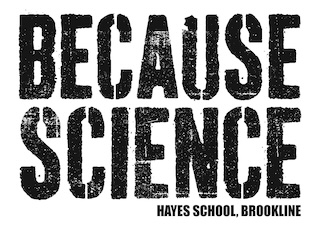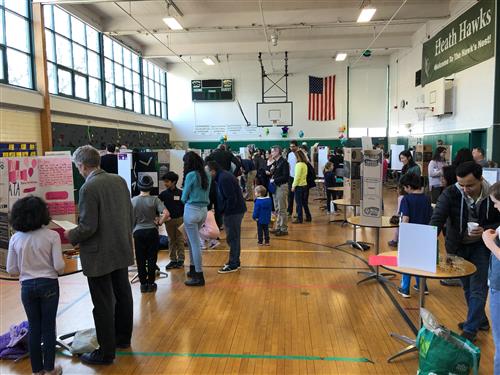Hayes Science Fair - General Information
-
The 6th annual Hayes Science Fair will take place on Saturday, March 1, 2025 from 9am-1pm!
Access the day’s schedule here ----> days schedule
The Hayes Science Fair is coming up and there's still plenty of time to get started and join us on March 2nd! Let fellow students tell you why you should participate:

And you don’t want to miss participating. Last year was amazing:
- 95 participants, K through 8th grade – our highest number to date
- 48 projects – exploring volcanoes, molecular gastronomy, musical dogs, thermochromic materials, Brookline birds, electric cars and so much more
- 16 volunteer judges – all Hayes scientist-parents
- Over 300 guests in the gym and the auditorium
Get excited about joining us as a participant or a supporter! We hope you will join us again – or for the first time!
Student Registration and Volunteer Signup
Student registration: https://forms.gle/
q9Jn5fBwKBbn36UP7 Volunteer signup: https://www.signupgenius.com/go/10C0E49A5A828A7FCC25-55145085-science#/
Need some inspiration?
Check out this recap of the 2020 Heath Science Fair.

What is a science fair?
A science fair is a place for students to present their science projects to professional scientists and to the community. Its main purpose is to get you excited about science by doing it rather than simply learning about it. A scientist first asks a question about some aspect of the world and then tries to find its answer. At the science fair, each student presents a project, both visually and orally, with the question and answer displayed in an interesting way. Students should be able to explain their projects and answer questions. The science fair will also include a science activity expo, where students will have an opportunity to see and interact with cool technologies, devices, and scientists.
What are the goals of the science fair?
-
Students will understand and be able to apply the scientific method;
-
Students will develop intellectual curiosity about how things work;
-
Students will become aware of how science is relevant to the real world;
-
Bring public awareness to the field of science.
What makes a good project?
-
Ask a question in a subject you are interested in – it’s something you like to think about and will be happy to spend time working on. For example, you may have a pet bird at home who is a very picky eater. What is its favorite food? Does it ever get tired of eating the same food all the time? Once you’ve chosen a question, you must figure out a way to find the answer to your question. There are many ways to answer questions. You can design an experiment or a survey, build a model, or write a computer program that can help you find the answer.
-
A good project is one you can do mostly by yourself, with only a little help from grown-ups: parents, Science Fair Organizers, teachers, and friends. The reason to do a project is that it is fun and will help you learn something you didn’t know before. Having someone else help you too much takes away some of your fun at discovering something new, and you don’t learn as much. Your project doesn’t have to be perfect – if it follows the scientific method and is neat enough to read, then it is good.
-
A good project is something you design and build by yourself from regular or everyday materials. Doing it by yourself is more satisfying than simply buying a kit someone else made in the store. Creative projects using basic materials make for the most impressive science fair projects!
-
A good project is one that, when you’re done with it, makes you wonder about other things. Did seeing what happened in your project make you think of other questions you’d like to know the answer to? That’s a great project!


